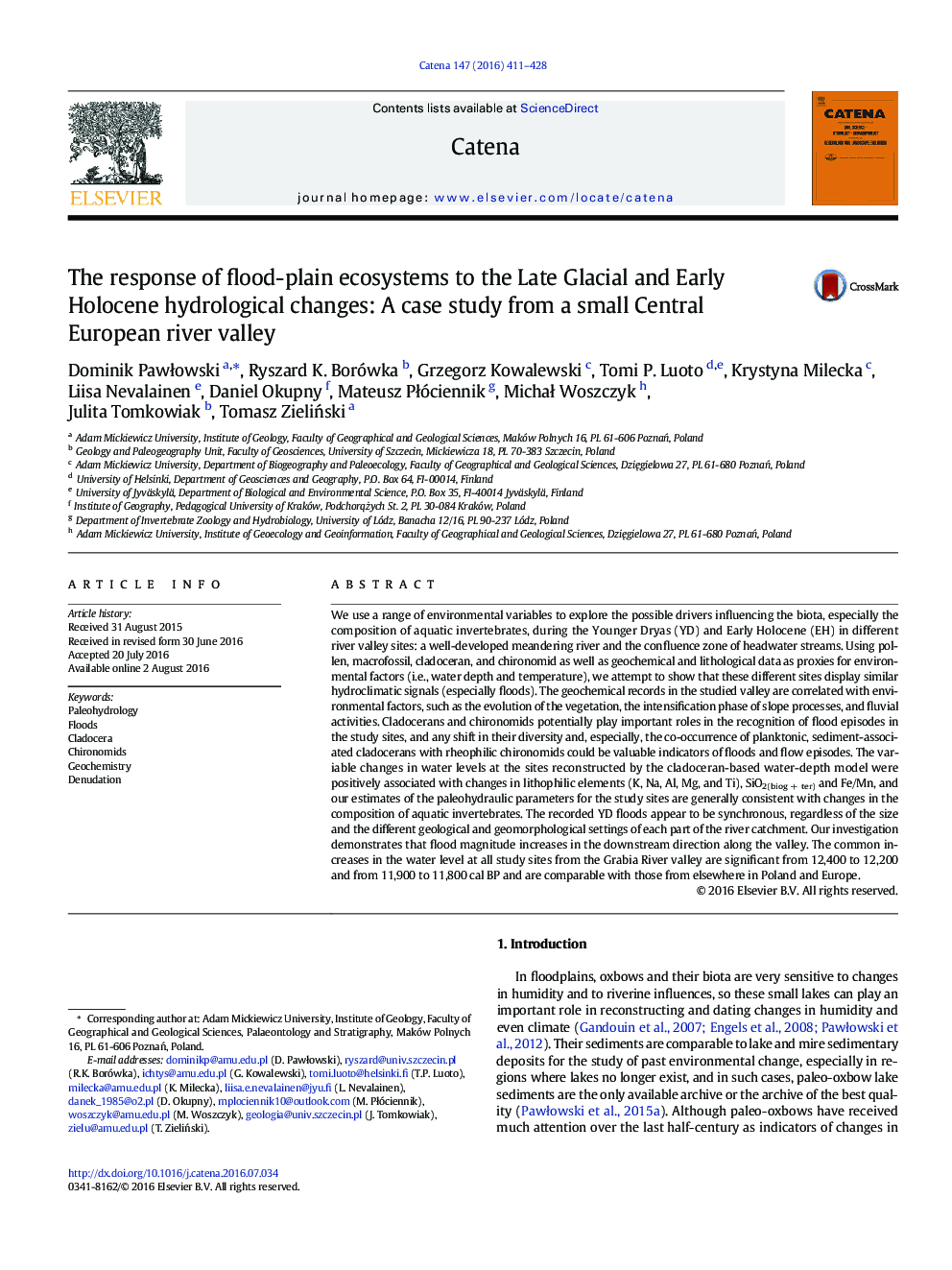| کد مقاله | کد نشریه | سال انتشار | مقاله انگلیسی | نسخه تمام متن |
|---|---|---|---|---|
| 6407744 | 1629205 | 2016 | 18 صفحه PDF | دانلود رایگان |
- Reconstruction of environmental drivers influencing different valley parts in YD/EH
- Mid- and uppermost river reaches display similar hydroclimatic signals in the YD.
- Water-level changes and denudation processes were significant in valley development.
- Cladocerans and chironomids play important roles in recognizing flood episodes.
- Water-level and temperature changes during the YD have been reconstructed.
We use a range of environmental variables to explore the possible drivers influencing the biota, especially the composition of aquatic invertebrates, during the Younger Dryas (YD) and Early Holocene (EH) in different river valley sites: a well-developed meandering river and the confluence zone of headwater streams. Using pollen, macrofossil, cladoceran, and chironomid as well as geochemical and lithological data as proxies for environmental factors (i.e., water depth and temperature), we attempt to show that these different sites display similar hydroclimatic signals (especially floods). The geochemical records in the studied valley are correlated with environmental factors, such as the evolution of the vegetation, the intensification phase of slope processes, and fluvial activities. Cladocerans and chironomids potentially play important roles in the recognition of flood episodes in the study sites, and any shift in their diversity and, especially, the co-occurrence of planktonic, sediment-associated cladocerans with rheophilic chironomids could be valuable indicators of floods and flow episodes. The variable changes in water levels at the sites reconstructed by the cladoceran-based water-depth model were positively associated with changes in lithophilic elements (K, Na, Al, Mg, and Ti), SiO2(biog + ter) and Fe/Mn, and our estimates of the paleohydraulic parameters for the study sites are generally consistent with changes in the composition of aquatic invertebrates. The recorded YD floods appear to be synchronous, regardless of the size and the different geological and geomorphological settings of each part of the river catchment. Our investigation demonstrates that flood magnitude increases in the downstream direction along the valley. The common increases in the water level at all study sites from the Grabia River valley are significant from 12,400 to 12,200 and from 11,900 to 11,800 cal BP and are comparable with those from elsewhere in Poland and Europe.
Journal: CATENA - Volume 147, December 2016, Pages 411-428
